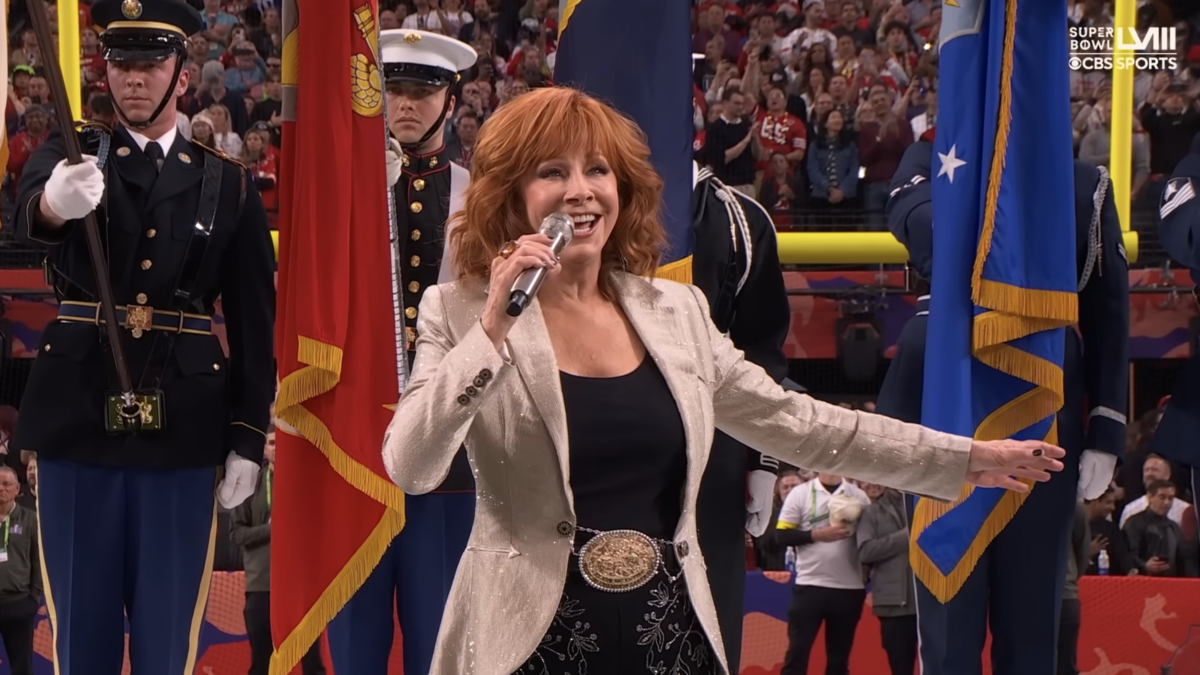
Tom Petty—singer, songwriter, and leader of the Heartbreakers—has passed away after suffering a full cardiac arrest in his Malibu home Sunday night. Few will capture Petty’s artistic legacy better than Steven Hyden did in 2014:
“Tom Petty has been a rock star for almost 40 years. He has a dozen or so songs that will be played on classic rock radio for as long as there is classic rock radio. If you’re a music fan of a certain age, there was a time in your life when he seemed inescapable. Even now, Petty is still a guy that most people know, even if you don’t actively care about him one way or the other. Tom Petty’s music doesn’t necessarily demand a value judgment. It’s like having an opinion on tap water or concrete. Why bother? It’s just there, reliable to the point of invisibility. If it went missing, you would notice. But it’s never going missing, because Tom Petty has existed since the beginning of time, and will continue to exist until time is extinguished.”
At that time, Petty was responsible for one out of every 40 rock songs heard on the radio. That likely has not changed much. The ubiquity of Petty’s music, however, may tend to lessen our appreciation of his gifts. Accordingly, let us reconsider a dozen of his greatest songs, most of which are old friends.
1. ‘American Girl’
“American Girl,” from the debut album Tom Petty and the Heartbreakers, did not chart in its initial release as a single. Nevertheless, it became one of his signature songs and recognized as a slice of pop genius. “American Girl” immediately recalls and updates the folk-rock of the Byrds, with Petty’s Rickenbacker and vocals both recalling Roger McGuinn (Ron Blair’s melodic bass is also key here). “She was an American girl / Raised on promises” is a fantastic opening line in a catalog that would eventually bulge with great opening lines.
The song is also symbolic of the unusual place Petty would occupy in rock music during the early years of his career. In 1976, as album-oriented rock was entering a period of overproduced, self-indulgent ennui, “American Girl” was a jolt that would sound classic to a mass audience but also channel the back-to-basic ethos of the Punk and New Wave bands coming on the scene. The only other band from the era with this reach would be Cheap Trick.
“American Girl” is also the song Catherine Martin sings with gusto in her car before she is abducted by Buffalo Bill in “Silence of the Lambs.” Petty has always been with us in this way, on our radios, in our moments of joy and pain.
2. ‘Breakdown’
“Breakdown” was the first single from the debut album and it just barely cracked the Top 40 in North America. The song also marks Petty’s range; it’s slow burner, slinky and swaggering. Millennials might find the lyrics too much like the “negging” of a pick-up artist, but the listener generally wants to be picked up by Petty. “Breakdown” was also a live favorite, probably for this reason.
3. ‘Refugee’
“Refugee” probably edges out “American Girl” as Petty’s calling card. A defiant anthem, it occupies the position in his catalog roughly akin to “Born to Run” in Bruce Springsteen’s oeuvre, in terms of its commercial impact on Petty’s career, the business tumult swamping Petty when it was recorded, and the monumental production effort mounted to get the “magic” master take (as documented in Peter Bogdanovich’s four-hour epic, “Runnin’ Down a Dream”).
The lead track from Damn the Torpedoes, “Refugee” is a near-perfect representation of Petty’s take on the Southern rock that informed his writing as much as the Byrds or Bob Dylan did. For all that has been written and said about Petty’s influences, it is impossible to imagine anyone but Petty writing “Refugee.” It’s also a master showcase for the talents of the Heartbreakers, particularly Mike Campbell’s ominous guitar licks and Benmont Tench’s incendiary organ solo.
4. ‘Here Comes My Girl’
“Here Comes My Girl,” the follow-up single to “Refugee,” showcases a different part of Petty’s Southernness. It captures the exhilaration of seeing your girlfriend, especially a loyal and supportive one, as well as any pop song. But musically, that exhilaration is mixed with an almost laid-back quality (informed by Stan Lynch’s drumming), a majestic moment delivered in a seductive drawl.
As a near-aside, Damn the Torpedoes could be just about anyone else’s greatest hits collection. Petty originally wanted to give “Don’t Do Me Like That,” the single released before “Refugee,” to the J. Geils Band.
5. ‘The Waiting’
“The Waiting,” the hit single from Hard Promises, was a bit of art imitating life. A number of Petty’s hits were written quickly, as though he plucked them from the ether. Not so for this one, though the result of the struggle was more than worth it. If the guitar on “American Girl” chimes like the Byrds, the opening of “The Waiting” jangles like the Byrds; only “Listen To Her Heart“ (from the sophomore LP) comes close in this department.
Petty understood how deeply he was tapping this vintage sound; the accompanying video resembles nothing so much as a mid-sixties appearance on “The Ed Sullivan Show.” Lyrically, however, “The Waiting” is more mature and soulful, a story of finding true love and commitment that likely inspired the album title.
6. ‘Stop Draggin’ My Heart Around’
“Stop Draggin’ My Heart Around,” a duet with Stevie Nicks, represents Petty at the peak of his songwriting powers. Petty originally intended to give Nicks “Insider” for her Bella Donna album, but decided he wanted to keep it for Hard Promises. His “make good” to Nicks marries a foreboding, sinuous vibe like “Refugee” into a mournful plea of a woman seeking release from a toxic relationship. People could relate; it became one of his highest-charting songs.
7. ‘Don’t Come Around Here No More’
“Don’t Come Around Here No More”: Petty collaborates with the Eurythmics’ Dave Stewart on a slab of psychedelic bubblegum of the sort that had not ruled the airwaves since Tommy James and the Shondells’ “Crimson and Clover.” The video would provide the suitably iconic image of Petty as the Mad Hatter in a Wonderland tea party.
This joint effort was almost the reverse of “Draggin’.” Stewart got the title from Nicks in description of her breakup with Joe Walsh. Petty had to have been immensely confident in this track, given that it stands out like a sore thumb on Southern Accents, which is otherwise largely a concept album that already boasted a strong title track and a soaring lead-off in “Rebels.”
8. ‘Jammin’ Me’
“Jammin’ Me,” from Let Me Up (I’ve Had Enough), edges out “Rebels” on this list mostly because it underscores Petty’s mastery of the various sub-genres of rock that influenced him. If the album title suggested some temporary exhaustion on Petty’s part, the single had him sprinting through the tape.
“Jammin’ Me” summons the spirit of garage rock that originally inspired Petty, with Tench’s ramshackle piano fills and subtle organ playing key parts in the arrangement. Lyrically, it’s a silly, fun catalog of complaints and pop culture references likely updating mid-sixties Dylan (with whom Petty was touring at the time).
9. ‘Free Fallin’
“Free Fallin’,” from Petty’s first solo album Full Moon Fever, was one of those songs that seemed to write itself, with a very light assist from producer (and fellow Traveling Wilbury) Jeff Lynne. It’s a piece of musical alchemy in which simple music and simple lyrics somehow become transcendent instead of banal.
Petty always drew upon and reinvented the forms of music we recognize as Americana. On “Free Fallin’,” he reinvents Americana for Reseda and a million other suburbs. Instead of paddlewheelers steaming down the Mississippi River in “Proud Mary,” we get skateboards on Ventura Boulevard.
10. ‘Runnin’ Down a Dream’
“Runnin’ Down a Dream,” also from Full Moon Fever, edges out the album’s lead single, “I Won’t Back Down,” on this list based on the sheer strength of its opening guitar riff. Upon hearing this song, who is not mentally transported somewhere? The singer (whom I imagine to be Petty) is driving—probably in a vintage car, probably like a bat out of hell, eventually through a torrential rainstorm.
Of course he is also listening to Del Shannon’s “Runaway,” a song as searching and obsessive as this one. But “Runaway” conveys more paranoia on a musical level, particularly with its swirling, high pitched organ solo. In “Runnin’ Down a Dream,” Petty is sharing and enjoying his obsession with you.
11. ‘King of the Hill’
“King of the Hill” was Petty’s chance to pay back Roger McGuinn with a suitably folk-rock parable about the excesses of success. The song was eventually revealed to be about John Phillips of The Mamas and The Papas (the green Gucci bag being the tell to readers of Phillips’s biography).
There is also a terrific scene in the Bogdanovich documentary where McGuinn is being pushed around by record company people trying to make the record “modern,” whereupon Petty reads them the riot act and shames them into not interfering with one of his idols.
12. ‘It’s Good to Be King’
“It’s Good to Be King“ makes the list because much of Petty’s output in his later years tends to have an insular quality and too often the sense that his protagonists are perhaps escaping into themselves with the assistance of one substance or another. Here, Petty plays the theme more for wry humor (perhaps being inspired by the Mel Brooks movie line), taking just enough of the edge off a song that otherwise might have been written by a King of the Hill.
Of course, anyone familiar with Petty recognizes that this list merely scratches the surface. Were I primarily interested in displaying my musical acumen, I could have picked lesser-known gems on most of his albums, like “Shadow of a Doubt“ from Damn the Torpedoes, “Nightwatchmen” from Hard Promises, or “Two Gunslingers” from Into the Great Wide Open.
There are hits I overlooked, like “Learning to Fly.” I could have swapped the stomping “I Need to Know” in place of “Runnin’ Down a Dream.” I could have included “You Got Lucky,” despite that unfortunately dated ’80s synthesizer.
I could have cheated by mentioning a bunch of these other songs along the way, and in the conclusion (as I just did). The selection here is largely more obvious because this is how most of us will remember Tom Petty. His hit songs, his, monster musical hooks, his catchy melodies and his disarmingly direct lyrics may seem to lose their power through their ubiquity. It’s worth hearing them again in the way Petty saw his girl all those years ago.









